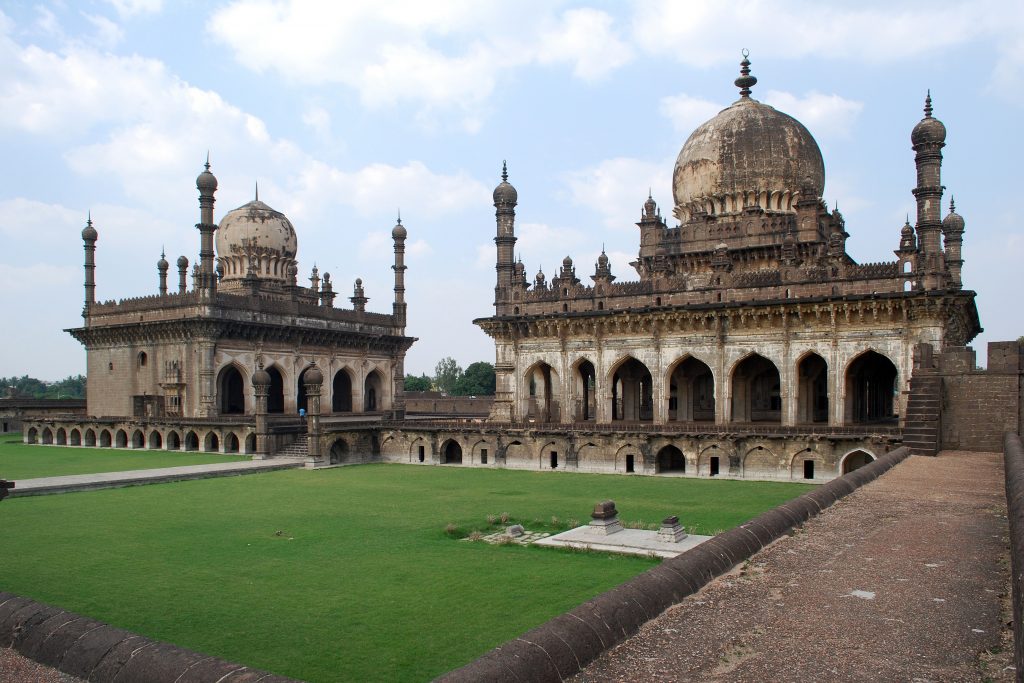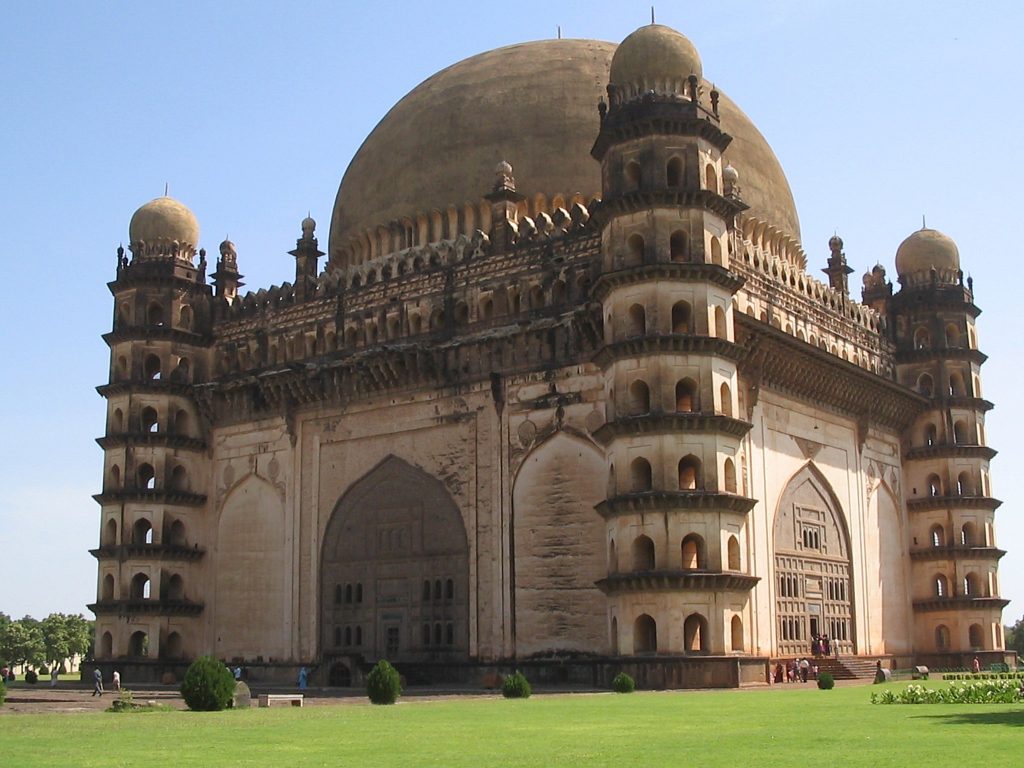Bijapur, officially known as Vijayapura, is the district headquarters of Bijapur District of Karnataka state. The district is bounded by Solapur district on the North and Sangali on the North-West, Belgaum district on the West, Bagalkot on the South, Gulbarga on the East and by Raichur on the South-East.
The city was established in the 10th-11th centuries by the Kalyani Chalukyas and was known as Vijayapura (City of victory). The city was passed to Yadavas after Chalukya’s demise. Bijapur came under Muslim influence, first under Allaudin Khalji, the Sultan of Delhi, towards the end of the 13th century, and then under the Bahamani kings of Bidar in 1347.
In 1347, when the Bahamani dynasty was established, it included southern and eastern parts of Bijapur district. The supremacy of the Bahaman’s may be said to have ceased by 1489. At that time five Shahi Dynasties were born and one of them was “Bijapur‟. The Mughal emperor Aurangazeb conquered Bijapur in 1686 and it was under Mughal rule up to 1723.
In 1724 the Nizam of Hyderabad established his independence in the Deccan and included Bijapur within his dominions. However, his acquisition on this portion was of brief duration, in 1760 it went into the hands of Marathas.
In 1817, war broke out between the British and the Marathas. By 1818, the whole of Bijapur was occupied by the British and was included in the territory assigned to the Raja of Satara. In 1848 the territory of Satara was obtained through the failure of heir and the British rule started. Till 1884, the Bijapur district had headquarters at Kaladagi. Bijapur was made headquarters in 1885.
After Independence, the movement for re-organisation of States gained further momentum and on 1 November 1956 a separate “Mysore State‟ was formed. By the wish of the people it was renamed as “Karnataka‟. Thus, the district Bijapur along with other Kannada speaking areas became a part of “Karnataka State‟ on 1 November 1956.
Central government approved the request to rename the city from Bijapur to “Vijayapura” on November 1, 2014.
Vijayapura district belongs to the Belagavi Division of Karnataka. It is made up of two sub-divisions. The Vijayapura subdivision includes Vijayapura, Basavan Bagewadi and Muddebihal Taluk. Indi subdivision consists of Indi and Sindagi Taluk.

Bijapur is a historical city in Karnataka. The city is famous for its ancient monuments, mosques, mausoleums, palaces, fortifications and other structures. Situated at a distance of about 530 km to the northwest of Bangalore, Bijapur attracts scores of tourists who flock to have a glimpse of the historical, cultural and architectural beauty of the city.
History of Bijapur
Bijapur is an ancient city that was founded in the 10th-11th century by Kalyani Chalukyas, the then rulers of South India. During that period it was known as Vijayapura which means the ‘City of Victory.’ Later it came under the rule of the Yadavas and then the Bahmani Sultanate of Gulbarga. It was the capital of the Adil Shahi kings from 1489 to 1686. The city came under the dominion of Aurangazeb in 1686 and from then the downfall of this city started.
Due to the influence of different rulers, the city imbibed various cultural influences. As such, even today the city displays strong Islamic character as well as Shaivik character.

Architectural Splendour of Bijapur
Bijapur is well-known for the exceptional architecture of its monuments and structures that are mainly of Islamic style. The splendid mosques and tombs in the city speak volumes about the master craftsmanship of the workers of that time. The intricate work displayed in the palaces, monuments and the fort indicates the stress laid on delicate carvings and symmetry.
Many structures in the city have withstood the test of time and continue to mesmerize people even today with their impressive architectural beauty.
Bijapur was renamed as Vijayapur in 2014.


2 Comments
Comments are closed.